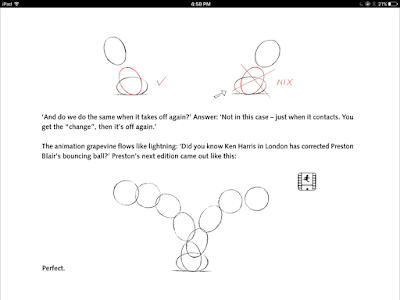Now, Pixar is helping others learn the secrets of great storytelling – for free, in partnership with online education provider Khan Academy.
https://www.khanacademy.org/partner-content/pixar/storytelling
Wednesday, February 15, 2017
Monday, February 13, 2017
History of animation
Starting in the early 1800's we saw a variety of mechanical devices
that used rows of images printed on strips or disks of paper to create
the illusion of motion. These were the first animation devices.
 The phenakistoscope
was basically a spinning disk of images that you viewed through a
narrow slit to trick your brain to see a sequence of images instead of a
continuous blur.
The phenakistoscope
was basically a spinning disk of images that you viewed through a
narrow slit to trick your brain to see a sequence of images instead of a
continuous blur.
The praxinoscope used mirrors to achieve the same result — reflected pictures on the inside of a spinning cylinder appeared as a moving picture.

The zoetrope combined these concepts, with a spinning cylinder and narrow slits you'd look through to see the "moving" image.



There's also the poor man's version, the flip book, which was actually invented around the same time as these other contraptions.
 Whether it was a spinning disk or a series of mirrors, the end result
was actually pretty similar to the GIFs we know today — looping images
that play cognitive tricks to allow us to see motion.
Whether it was a spinning disk or a series of mirrors, the end result
was actually pretty similar to the GIFs we know today — looping images
that play cognitive tricks to allow us to see motion.
The technique of the phenakistoscope and other devices hasn't dissapeared entirely, even if it's been replaced by more sophisticated, digital forms.
https://www.propublica.org/nerds/item/on-repeat-how-to-use-loops-to-explain-anything

The praxinoscope used mirrors to achieve the same result — reflected pictures on the inside of a spinning cylinder appeared as a moving picture.

The Praxinoscope



The Zoetrope

The technique of the phenakistoscope and other devices hasn't dissapeared entirely, even if it's been replaced by more sophisticated, digital forms.
https://www.propublica.org/nerds/item/on-repeat-how-to-use-loops-to-explain-anything
Bouncing ball: Contact and Spacing ( Timing) next assignment 3 until feb 26th ;
Look at the image and try to understand timing and spacing.
For example,
between 1-3 is slower.
Between 4-8 is faster.
next assignment 3 until feb 26th ;
Draw following bouncing image on one sheet of paper.
Too Easy? Then, try to make another flip book of bouncing ball with two contacts with the ground.
Notice that 9-11 is faster than 1-3.
For example,
between 1-3 is slower.
Between 4-8 is faster.
next assignment 3 until feb 26th ;
Draw following bouncing image on one sheet of paper.
Too Easy? Then, try to make another flip book of bouncing ball with two contacts with the ground.
Notice that 9-11 is faster than 1-3.
Bouncing Ball flip book.
Did you get a chance to play with flip book? Here is my bouncing ball. Hope you enjoy yours and share if you like. Thank you.
Assignment2 Draw from Memory until Feb 19th
Assignment 2: Google your favorite animals, cats, dogs or giraffes.
Save the image on your computer.
Observe and study it for 5-10 minutes.
Close the image.
Draw from your memory.
You can cheat and look at it every 15-20 minutes. However, the rule is don't just copy.
Learning to do more than just see – to observe, study and remember one’s subject is essential to learning to draw and paint.A video posted by Sansu (@hellosansu) on
The next step is to develop and work from a strong visual memory. The development of a visual memory is the way to retain one’s observations and pull from them not only the essential visual elements of the moment, but also the emotion connected to them.
After many years of practice, this process can happen almost unconsciously every time we pick up a brush, even when painting outdoors. Back in the studio, we rely even more heavily on our visual library to instill life and emotion in our work. It is no wonder, then, that art created in partnership with the visual memory has the ability to touch emotion and engage the viewer more than mere representation.
“simply to reproduce in other minds the impression which a scene has made upon him . . . A work of art does not appeal to the intellect. It does not appeal to the moral sense. Its aim is not to instruct, not to edify, but to awaken an emotion . . . Details in the picture must be elaborated only enough [to] fully reproduce the impression that the artist wishes to reproduce. When more than this is done, the impression is weakened or lost, and we see simply an array of external things which may be very cleverly painted, and may look very real, but which do not make an artistic painting.” (Harper’s New Monthly Magazine, February 1878, “A Painter on Painting”, George Inness.)
http://www.artistdaily.com/blogs/oil-painting/visual-memory
Subscribe to:
Comments (Atom)



